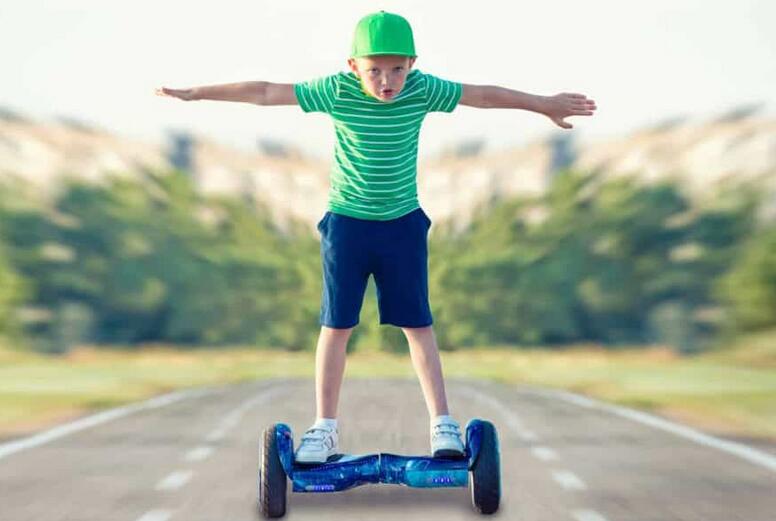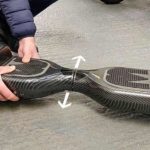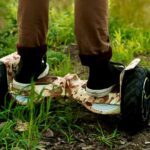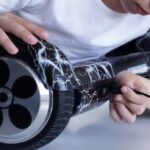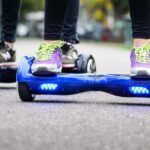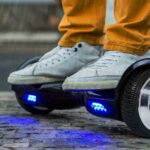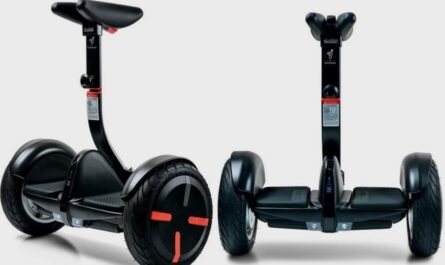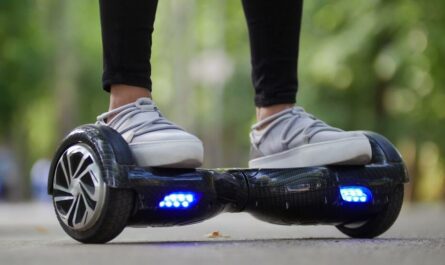Hoverboards have taken the world by storm, providing a fun and futuristic mode of personal transportation. As interest in hoverboards continues to grow, one common question arises: “How fast does a hoverboard go?” In this in-depth article, we will explore the factors that influence hoverboard speed, the range of speeds available, and safety considerations to keep in mind.
Table of Contents
Average Speed and Top Speed
Hoverboard speed refers to the rate at which these devices can travel. It is typically measured in miles per hour (mph) or kilometers per hour (km/h).
The average speed of a hoverboard is around 6-8 mph, but some models can reach a top speed of up to 15 mph. Entry-level hoverboards usually max out at around 6-8 mph, which is ideal for beginners or younger users.
More advanced models, on the other hand, can push the limits up to 10-15 mph, catering to experienced riders looking for a faster, more thrilling ride.
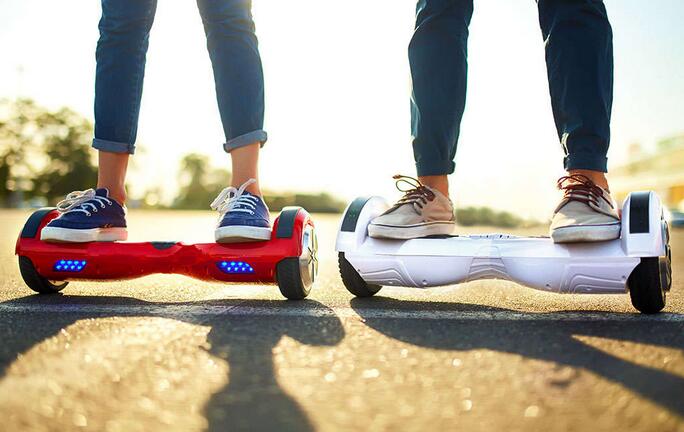
Factors That Affect Hoverboard Speed
Several key factors come into play when determining a hoverboard’s speed capabilities. These factors include motor power, wheel size, rider weight, terrain type, and battery life.
1. Motor Power
The power of the hoverboard’s motor is a primary factor that determines its speed capabilities. More powerful motors can generate higher levels of torque, allowing the hoverboard to reach faster speeds. When choosing a hoverboard, it is essential to consider the motor power to ensure it meets your desired speed requirements.
2. Battery Capacity and Voltage
The battery capacity and voltage directly impact the performance of the hoverboard, including its speed capabilities.
A larger battery capacity allows for longer rides, while higher voltage provides more power to the motor, enabling faster speeds. It is crucial to consider the battery specifications to determine the hoverboard’s speed potential.
3. Rider Weight
The weight of the rider affects the speed of the hoverboard. Heavier riders may experience slightly lower top speeds compared to lighter individuals.
The additional weight puts more strain on the motor and reduces its overall performance. Riders should be aware of the weight limitations specified by the manufacturer to ensure optimal speed and performance.
4. Terrain Conditions
The type of terrain and its condition can significantly impact hoverboard speed. Smooth, flat surfaces provide better traction, allowing the hoverboard to reach its maximum speed more easily.
On the other hand, rough or uneven terrain can impede speed and stability, making it challenging to achieve higher speeds. Riders should consider the terrain they will be riding on and adjust their speed expectations accordingly.
5. Temperature
Extreme temperatures can affect the performance of the hoverboard, including its speed capabilities. Cold temperatures can cause the battery to drain faster, reducing the overall speed and range of the hoverboard.
Conversely, extremely hot conditions can also affect battery performance and potentially limit speed. It is important to consider the temperature conditions in which you will be riding your hoverboard.
6. Maintenance and Condition
The maintenance and overall condition of the hoverboard can impact its speed. Regular maintenance, such as keeping the tires properly inflated, ensuring the wheels are clean, and checking for any mechanical issues, is essential for optimal speed and performance. Neglecting maintenance can result in decreased speed and overall performance.
7. Skill and Experience
The skill level and experience of the rider also play a role in hoverboard speed. Beginners may not be comfortable riding at high speeds initially, while more experienced riders may have better control and confidence.
As riders gain experience and improve their skills, they can better handle higher speeds and push the limits of their hoverboard.
Tips for Enhancing Hoverboard Speed
For riders interested in maximizing the speed of their hoverboards, here are some tips to consider:
1. Upgrading to more powerful motors and batteries
Some hoverboards allow for motor and battery upgrades, providing the potential for increased speed. Consult with the manufacturer or a reputable technician to explore these options.
2. Proper weight distribution for better speed control
Maintaining the correct weight distribution on the hoverboard contributes to better speed control. Leaning slightly forward can increase speed while leaning back can slow it down. However, riders should exercise caution and avoid extreme weight shifts that may compromise balance.
3. Choosing hoverboards with advanced speed modes and settings
Certain models offer different speed modes, allowing riders to select a level that suits their skill and comfort. These modes can provide a more customized riding experience while ensuring safety.
4. Training and practice
Developing riding skills and confidence through training and practice can enhance overall control and speed management. Practicing in open areas with minimal obstacles can help riders become more comfortable at higher speeds.
5. Training Modes and Rider Experience
Many hoverboards come with training modes that are designed to help beginners learn how to ride. These modes limit the speed and sensitivity of the hoverboard, making it easier to control. As riders gain more experience, they can switch to more advanced modes that offer higher speeds and greater sensitivity.
Hoverboard Speed Limits and Regulations
The speed limit for hoverboards varies depending on the region. Most states do not have a specific speed limit for hoverboards in the United States. However, riders are generally advised to follow the same speed limits as bicycles, ranging from 15 to 25 miles per hour (24 to 40 kilometers per hour).
In the United Kingdom, hoverboards are limited to a maximum speed of 12.5 miles per hour (20 kilometers per hour) on public roads and sidewalks. Riders must also wear a helmet when using a hoverboard in public.
In Australia, hoverboards are classified as motor vehicles and subject to the same regulations as other vehicles. This means that riders must follow speed limits and traffic laws and may also be required to obtain a license or registration for their hoverboard.
In addition to speed limits, riders should also be aware of other regulations that may apply to hoverboards in their region. For example, some areas may require riders to wear helmets or other protective gear or prohibit hoverboards in specific areas such as parks or sidewalks.
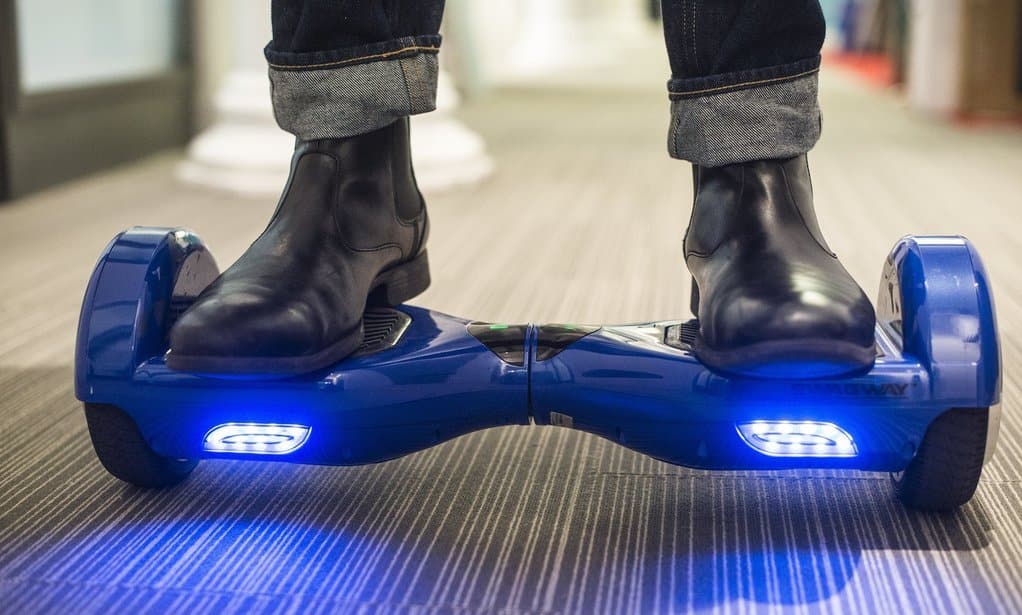
The Fastest Hoverboards on the Market
For those seeking high-speed hoverboards, several models offer impressive top speeds. Here are some examples of the fastest hoverboards available:
| Model | Top Speed (mph) |
|---|---|
| Speedster Pro X | 12 |
| Velocity V8 | 12 |
| Turbo Racer | 12 |
| Extreme Speed Master | 13 |
| Lightning Bolt Pro Elite | 15 |
| Hyperboard Sonic Rocket Blaster | 17 |
These models provide exhilarating speed for more experienced riders. However, it’s important to note that higher speeds can increase the risk of accidents. Riding at high speeds increases the risk of losing control, falling, or colliding with obstacles. Riders must prioritize their safety and adhere to recommended speed limits to avoid accidents and injuries.
Safety Precautions and Best Practices for Safe Hoverboard Riding
To ensure safe hoverboard riding, there are several factors that riders should take into consideration:
1. Skill Level and Balance Control
Hoverboards require a certain level of skill and balance control to ride safely. Beginners should start with a low-speed setting and gradually work their way up to higher speeds as they gain more experience. It is also important to practice balance control by shifting your weight forward, backward, and side-to-side while riding.
Rider experience is also an important factor in hoverboard safety. Experienced riders are more likely to be able to control their hoverboards in challenging situations and avoid accidents. However, even experienced riders should always wear protective gear and follow safety guidelines to minimize the risk of injury.
2. Protective gear
Wearing protective gear is essential when riding a hoverboard. Helmets, knee pads, elbow pads, and wrist guards can help protect you from injury in case of a fall. It is also recommended to wear closed-toe shoes with non-slip soles to ensure proper grip on the hoverboard.
In addition to protective gear, it is important to have safety equipment on your hoverboard. Lights and reflectors can help make you more visible to others, especially when riding at night. Some hoverboards also come with built-in safety features such as speed limiters and automatic shut-off mechanisms.
3. Riding conditions and terrain
The type of terrain and its condition play a crucial role in safe hoverboard riding. Smooth, flat surfaces provide better stability and control, while rough or uneven terrain can increase the risk of accidents. Riders should avoid areas with potholes, loose gravel, or other obstacles that may disrupt balance.
4. Impact of speed on maneuverability and stability
Higher speeds can affect the maneuverability and stability of a hoverboard. Riders should be aware that sharp turns or sudden changes in direction at high speeds may result in loss of control. It is advisable to practice and gradually increase speed while becoming familiar with the hoverboard’s responsiveness.
5. Recommended speed for beginners and advanced riders
Beginners should start with lower speeds, typically around 2-4 mph (3.2-6.4 km/h), until they feel comfortable and confident. Advanced riders can gradually increase the speed within the hoverboard’s recommended limit.
6. Maintaining control and balance at higher speeds
As the speed increases, it becomes essential to maintain control and balance. Riders should distribute their weight evenly, keep their body centered over the hoverboard, and maintain a relaxed yet firm stance.
7. Avoiding sudden acceleration or deceleration
Abrupt speed changes can destabilize the hoverboard and increase the risk of accidents. Riders should practice smooth acceleration and deceleration to maintain stability and control.
8. Regular maintenance and inspection
Keeping the hoverboard in good condition is crucial for optimal performance and safety. Regularly inspect the tires, battery, and overall structure of the hoverboard. Follow the manufacturer’s guidelines for maintenance and ensure that any necessary repairs are promptly addressed.
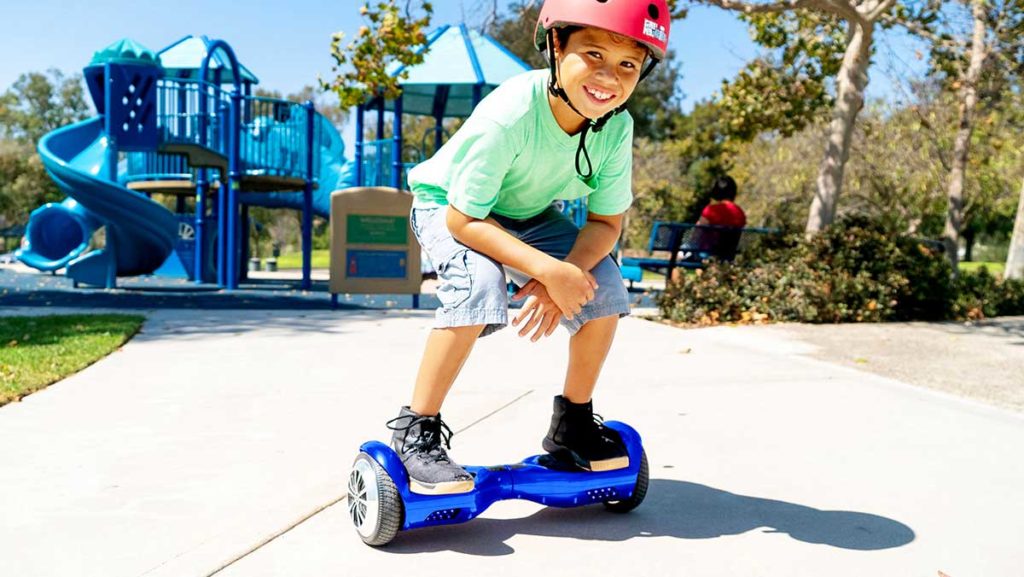
Buyer’s Guide: Choosing the Right Speed for You
When selecting a hoverboard, it’s essential to consider your riding preferences and skill level. For beginners, a hoverboard with a moderate speed range, such as 6-8 mph, is generally recommended. This speed range allows beginners to comfortably learn and adapt to the hoverboard’s dynamics. Intermediate and advanced riders may opt for higher maximum speeds, keeping in mind the need for increased caution and experience.
To find the hoverboard that matches your desired speed, consider factors such as motor power, wheel size, and battery life. Reading product specifications and user reviews can provide valuable insights into the ride experience and speed capabilities of different models.
Conclusion
Hoverboard speed can vary based on factors. While the average speed of consumer-grade hoverboards falls between 6 and 10 mph, riders can find models offering higher speeds. However, speed should always be balanced with safety. Adhering to speed limits, wearing proper safety gear, and practicing safe riding techniques will ensure an enjoyable and secure hoverboarding experience.

